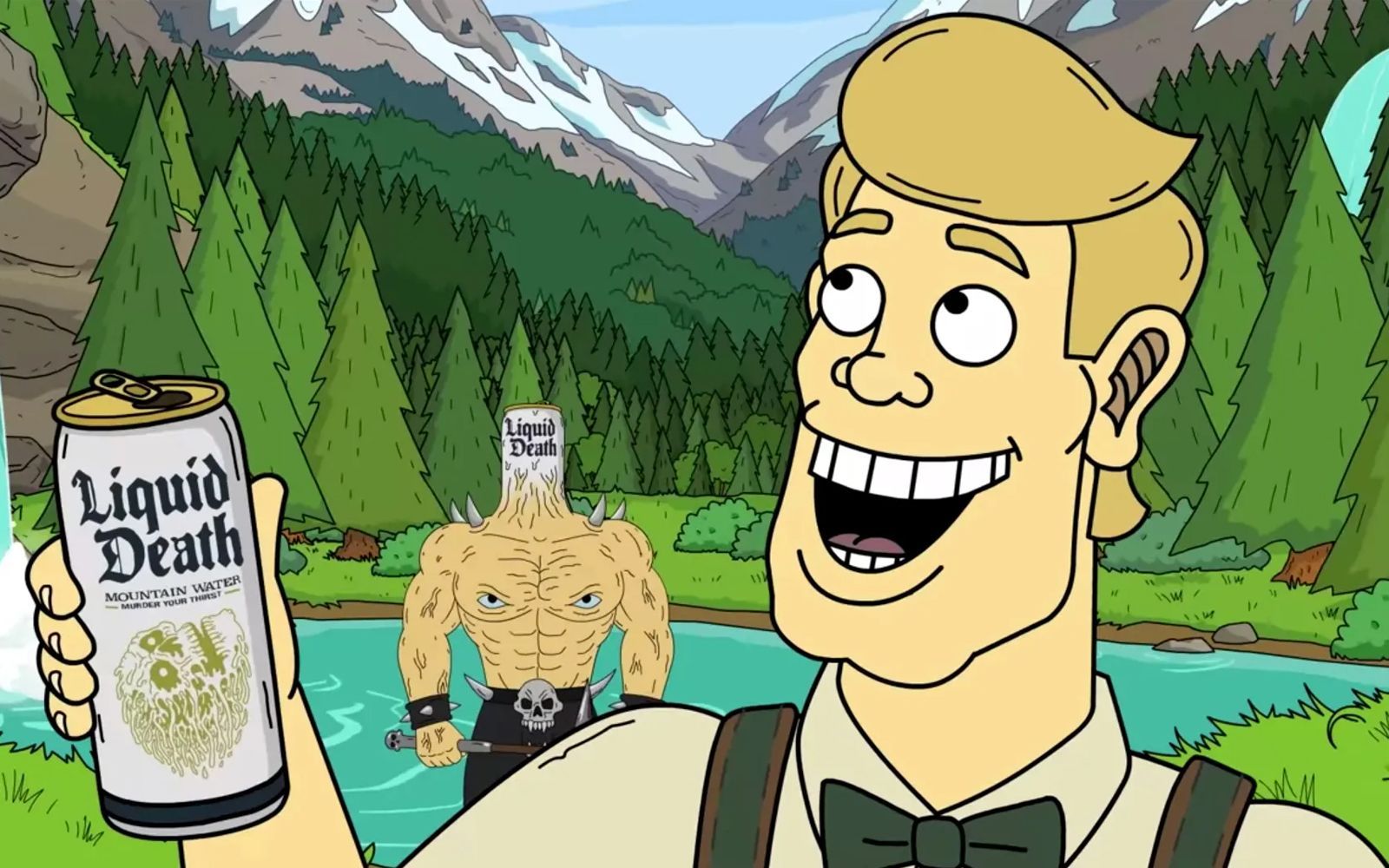
The water that promises to "murder your thirst" Beloved especially at the alternative scene, Liquid Death's success is a case in the U.S.
Tap water in the States is inexpensive and in most cases drinkable, but the market for bottled water is nonetheless thriving, so much so that in 2017 it became the most consumed beverage in the country, surpassing traditional soft drinks for the first time. More generally in America, there has historically been more choice in so many industrial product categories, but in recent years the market for health-conscious soft drinks has become particularly crowded. Most of these brands are designed for a tendentially female, form-conscious audience, but recently there has been one case that has worked because it has identified a very specific consumer niche that no other water brand had been interested in up to that point. This is Liquid Death, which targets young people who are passionate about skateboarding, tattoos, and concerts, right down to the so-called "straight edge"-those who prefer not to drink, smoke, or do drugs, but still frequent the alternative scene.
Liquid Death looks aesthetically like an energy drink, but it is "simply" water in half-liter cans. The packaging is very recognizable: the stroke is reminiscent of a metal band's identity, and its brand identity includes a skull that is shattering (the company's Instagram page often posts photos of people who have tattooed their logo). The product's claim is equally aggressive: "Murder your thirst." The brand has also collaborated with members of bands such as Alkaline Trio, Anti-Flag, and Rise Against, for example, to make an entire punk album inspired by comments left by haters of the product. And famed skateboarder Tony Hawk also worked with Liquid Death on a limited-edition series of skateboards. Three years after it was launched, the brand can already boast a significant cultural impact: it was initially distributed only by bars, tattoo studios, and liquor stores, while today it can be found in most U.S. supermarkets. Live Nation itself, a well-known promoter of major concerts and festivals, has chosen it to be the official water for its events.
One point Liquid Death cares about is the environmental aspect: the company has declared «death to plastic» and says their aluminum cans are «infinitely recyclable,» unlike plastic bottles-whose recycling would be "a myth." Liquid Death gets its water from the Austrian Alps because «shipping is by far the most carbon-efficient form of transportation,» and claims to donate five cents from each can purchased to projects to save the oceans. The New Yorker disputed, however, that Liquid Death could be considered an environmental company: «The benefits of aluminum packaging are relative. Aluminum may be light to transport and easy to recycle, but the industrial costs of mining and processing are considerable. [...] Then there is the social cost of treating water as a private commodity. The most ethical option is to avoid single-serve containers altogether and drink from the tap using reusable filters and containers.» The Guardian also questioned why people continue to buy bottled water: «Most tap water in the United States is safe [...], and it is regulated more strictly for contaminants than bottled water. In blind tests, subjects cannot distinguish bottled water from tap water. And tap water, of course, is almost free.»
The Ceo of Liquid Death is named Mike Cessario, he is of Italian descent, and his background to some extent traces the aesthetics and communication of the product he created: he is a former graphic designer who worked for Netflix (he contributed to the viral teasers for House of Cards and Stranger Things, among other things) and has been in several punk-rock and heavy metal bands. Cessario disputes that his company's success comes from a publicity stunt; for example, referring to Red Bull he told Eater, «What does riding dirt bikes have to do with an energy drink? Those people are professional athletes; they don't drink that stuff. But they definitely drink water.» The fact remains that Cessario's idea seems to have worked: there are nearly 30,000 outlets where Liquid Death can be found (including Whole Foods stores, 7-Eleven, and the Publix and Sprouts supermarket chains); in 2021 the company generated $45 million in revenue, and in 2022 it expects $130 million in sales.
The brand is valued at $700 million and has recently raised at least $70 million in new investment. The key to the strength of the "Austrian Mountain water" in the U.S. market-where now, in addition to still and sparkling versions, three fruit-flavored variants are available-is very much in the dark, ironic style of communication on the right channels, predominantly through social media. The company's website reads, «We're just a fun water company that hates corporate marketing as much as you do. Our evil mission is to make people laugh and get more of them to drink more water more often, all while helping to kill plastic pollution.» But Liquid Death's success comes more than anything else from two trends that have been particularly in vogue in recent years: the one that, especially online, places a high premium on drinking plenty of water for one's health; and the one that sees an increasing move by Americans away from traditional carbonated and sugary drinks-something many companies have taken advantage of to market products conveyed as healthier.









































